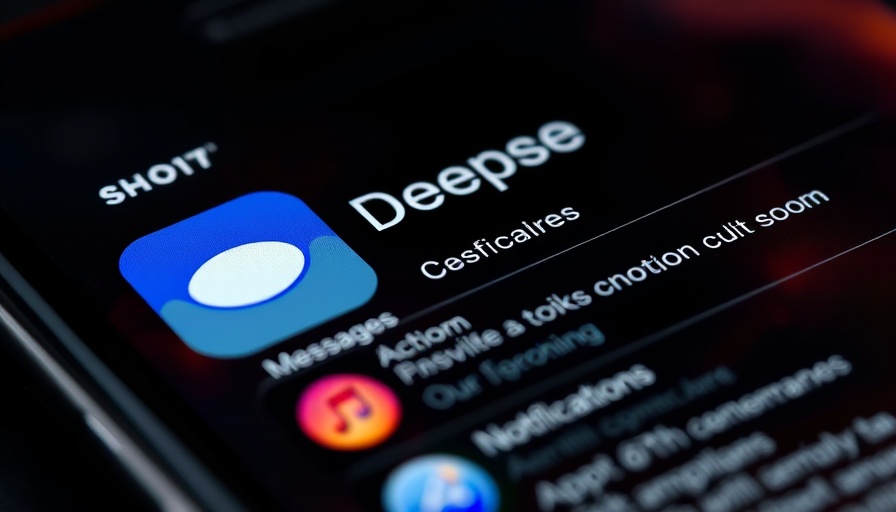
DeepSeek's Meteoric Rise: What Makes It Stand Out?
DeepSeek, an AI chatbot app from a relatively new Chinese tech lab, has rapidly captured global attention, outpacing established platforms like OpenAI's ChatGPT. The sudden surge in popularity has raised questions about the sustainability of AI models, the implications for the chip industry, and the balance of power in the AI landscape. Executives and decision-makers in various sectors will find the following insights critical for navigating this evolving market.
Disruption in the AI Landscape
DeepSeek's emergence is not just an anomaly; it’s a symptom of significant shifts in how AI capabilities are being developed and deployed. The app shattered expectations when it overtook ChatGPT as the most-downloaded app in the U.S., causing a staggering loss in Nvidia's market value—approximately $600 billion—after the launch. This turbulence underscores a pivotal moment for the tech industry, where agile startups can rival established giants.
Efficiency Through Innovation: DeepSeek's Technical Edge
What sets DeepSeek apart are its cutting-edge models, including DeepSeek-V2 and V3, which emphasize cost-efficiency without sacrificing performance. With training costs significantly lower—claimed to be below $6 million compared to over $100 million for leading competitors—DeepSeek has redefined the landscape for AI development. Not only does this profitability attract investors, but it also strategically positions the firm to expand its influence while maintaining lower operational costs. For executives, this serves as a reminder of the potential for operational efficiency in their own AI strategies.
Rethinking AI Consumption and Environmental Impact
Efficient AI models also address a growing concern: sustainability. The environmental impact of AI operations is under scrutiny as immense power consumption and heat generation become untenable. As DeepSeek pushes the envelope on training efficiency, this may pave the way for broader adoption of sustainable practices in AI. For business leaders, integrating environmentally responsible strategies could become a significant factor in consumer preferences and corporate responsibility assessments.
Learning from DeepSeek: Strategies for AI Integration
As DeepSeek illustrates, you don’t necessarily need vast resources to leverage advanced AI solutions. Companies should focus on: 1. Adopting agile methodologies that allow for rapid testing and iteration, 2. Building versatile teams drawn from diverse backgrounds to enhance innovation, and 3. Emphasizing sustainability and transparency in AI practices.
The Future of AI: An Expanding Landscape
The ongoing developments at DeepSeek suggest a future where smaller, more nimble enterprises could reshape the AI industry. As the barriers to entry continue to lower, it becomes crucial for businesses to adapt their AI strategies accordingly. Big Tech may not retain its unassailable lead indefinitely; instead, fostering collaboration and exploring partnerships with emerging firms could yield substantial rewards.
In conclusion, DeepSeek's ascent reflects transformational trends in AI development, operation, and market dynamics. By learning from this case, executives and decision-makers can better prepare for a future where agility, efficiency, and sustainability are paramount.
 Add Row
Add Row  Add
Add 




Write A Comment